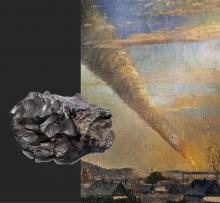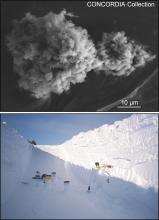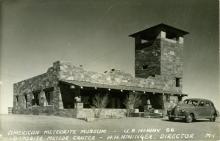Listen to today's episode of StarDate on the web the same day it airs in high-quality streaming audio without any extra ads or announcements. Choose a $8 one-month pass, or listen every day for a year for just $30.
You are here
Relics
The oldest bits of material on Earth weren’t born here. Instead, they were born around dying stars — hundreds of millions of years before the formation of the Sun, Earth, and the rest of the solar system.
The objects are solid grains a few millionths of an inch across. They formed from material expelled from dying stars. They blew through the galaxy until they reached the cloud of gas and dust that was giving birth to the solar system. They combined with other materials in that cloud to form a space rock.
That rock — or a part of it — fell to Earth in 1969. It plunged through the atmosphere, then shattered when it hit the ground, in Australia. More than 200 pounds of debris were recovered.
Scientists at the Field Museum in Chicago recently studied some of that debris. They used acid to dissolve the stuff that formed inside the solar system, leaving the grains from beyond it. They measured different forms of certain elements inside the grains. The ratio of those elements — especially neon — told them how long the grains had been in space. And that gave them a rough age for the grains.
More than half of the grains were older than the solar system — some by a billion years or more. And the oldest one could pre-date the solar system by three billion years.
Astronomers can learn about the conditions in which our solar system was born from these ancient relics — the oldest solid particles on Earth.
More about rocks from space tomorrow.
Script by Damond Benningfield





